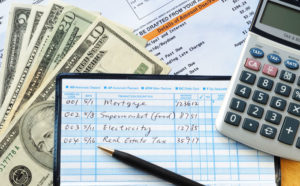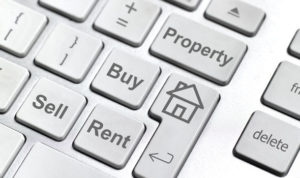What Types Of Investment Risk Are There?
 In the world of investments, there is a factor that is always present and you must take into account before deciding what to invest your money in: financial risk. No investment is totally safe, so any asset has its associated risks. Below we explain what types of investment risks exist so that you take them into account when investing.
In the world of investments, there is a factor that is always present and you must take into account before deciding what to invest your money in: financial risk. No investment is totally safe, so any asset has its associated risks. Below we explain what types of investment risks exist so that you take them into account when investing.
What is investment risk?
First of all, you must be clear about what investment risk refers to. It is the volatility or change in the value of the investment, which can be downward or upward. The riskier an investment is, the greater the possibility that its value will increase or decrease.
Therefore, from an investor’s point of view, financial risk is the lack of certainty about the future returns on your investment. In this way, there is the probability that an event will occur with negative financial consequences, where the benefits obtained are lower than expected or that there is no return at all.
What are the risk levels of an investment?
There are several ways to classify the risks of an investment, one of the most common is characterized by the exposure or level of risk that a financial investment represents; that is, if it is a low, medium or high risk operation.
1. Low risk
It is one that is unlikely to represent losses or non-payment. Some of the investments of this type can be with the government or with banks, since they are institutions with a low probability of failure compared to other issuers such as a person or company. You must take into account that these types of investments have a low risk, but also a low generation of profits.
2. Medium risk
This level offers considerable returns, but also implies a greater commitment on the part of the investment operation due to the willingness to expose more of the invested capital. Some assets of this type are debt or real estate bonds.
3. High risk
This level of exposure provides higher returns in exchange for assuming higher volatility. Therefore, the risk of default or bankruptcy is more latent but returns tend to fluctuate more. When choosing this type of investment, it is advisable to have greater knowledge and temperament, in addition to being very active when investing and having a loss containment strategy. At this level are stocks, currencies or derivatives.
What types of investment risk are there?
There are a number of investment risks that you can face when making your money profitable; These risks may affect the development of your investment project; however, there are ways to reduce them and get good results. We present some of the main risks that you can face:
Systemic or market risk : It is a type of risk that directly affects the market as a whole, regardless of the companies in which it is invested or the sector to which they belong. For example, wars or economic crises.
Non-systemic risk : It is a risk that only affects a certain company, since it will be conditioned by a series of factors specific to each company.
Liquidity risk : The ease of conversion of an asset into money is its liquidity. Investing assumes a liquidity risk, as no buyer is likely to be willing to purchase such assets when they are put up for sale; therefore, the seller will have to sell cheaper, which will reduce his profit or bring him losses.
Credit risk : It is also known as counterparty risk. It is when the entity to which the credit has been granted is not able to return it.
Legislative risk : It is a risk that will depend directly on governments, since they are the entities that have the authority to modify or create laws that may affect companies. One way to avoid this is to invest in companies with operations in stable countries and with laws that are already in force.
Interest rate risk : It is a systemic risk that is associated with interest rates fluctuating. It impacts all types of assets, but is especially noticeable in fixed income investments, such as bonds or preferred stocks.
Inflation risk : In the event that the inflation rate of an economy grows, there is a risk that it will exceed the profitability of your investment, since purchasing power is being lost and the return on the investment would be negative and therefore , the purchasing power would decrease.
These are some of the most important risks that you can face as an investor, but they are not the only ones, since there is another series of operational risks, due to falls in asset prices, derived from a natural catastrophe, among others, that they can influence the results.
How to minimize the risk in an investment?
Investing in any investment asset puts your capital at risk, however there are some security measures that you can apply to reduce this risk to the maximum. We share some of the main ones:
Knowing the investment assets : Having more information about the assets in which you want to invest, as well as knowing and evaluating the profitability they offer you is the first way to minimize risk.
Anticipating the future : Being informed about the changes that are taking place in the country, the market, technology, property etc., will allow you to build a more comprehensive strategy that will help you decide on the management of your products. You can use house price calculator to know estimate on the future value of your property
Diversify risk : This is a golden rule in investing. It is advisable to diversify through an investment portfolio that balances highly dangerous operations with the safest.
Evaluate results : Carry out an evaluation and follow-up of your results, will allow you to build an increasingly effective strategy for the future.
Use tools for financial risk management : There are some assets that allow you to have protection by taking out insurance.
Despite the measures that you can apply to reduce the risk in an investment, you should be clear that there is no financial instrument without risk, which means that all investments include a risk even if it is minimal.
What is the investment risk in factoring?
Factoring or factoring is an excellent investment option because it is an alternative fixed income asset with an attractive risk-return ratio. Invoices are relatively liquid, short-term and fairly safe investment assets, with average returns of 8% to 15% per year.
When you invest in an invoice, the credit risk is with the larger company that bought goods or services from the smaller company, which means that the debtor company is usually a solid company with good payment history, so there is talk of a reasonably low risk.
By investing in accounts receivable with Billed, we take care of all the operational part of the assignment, notification and collection of the invoice, so that you as an investor do not have to worry about anything in this process.
With Invoiced you invest in a diversified portfolio of invoices and thus reduce the risk of your capital.
















